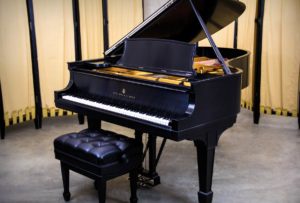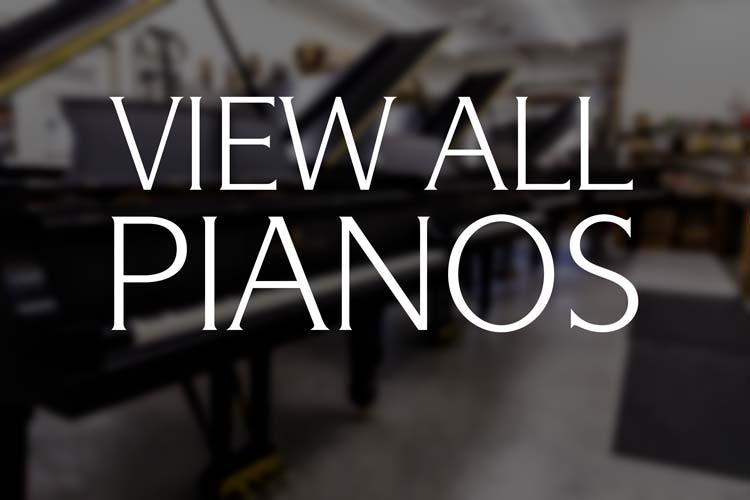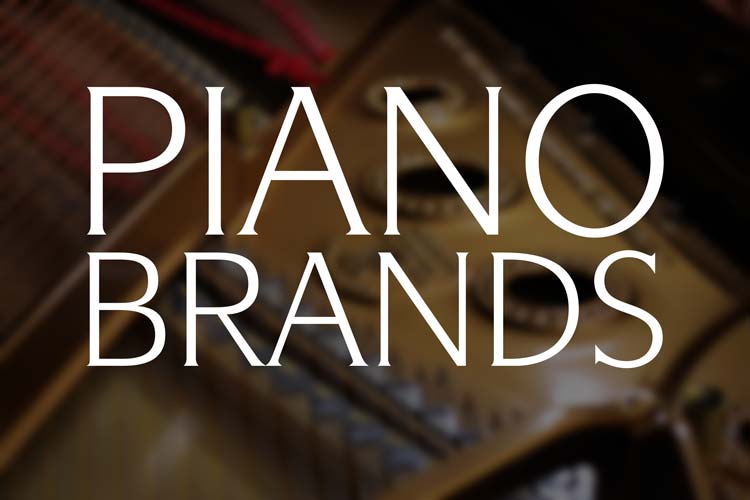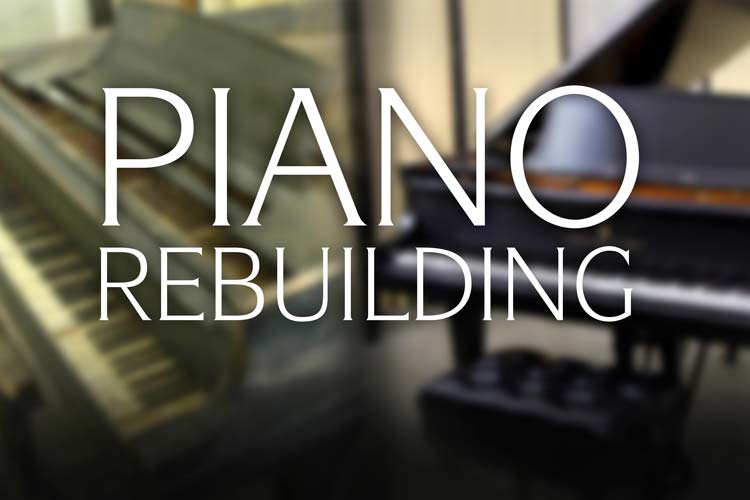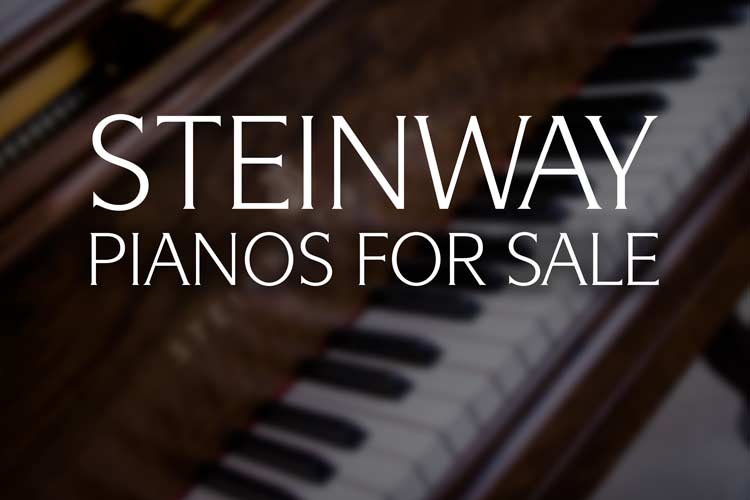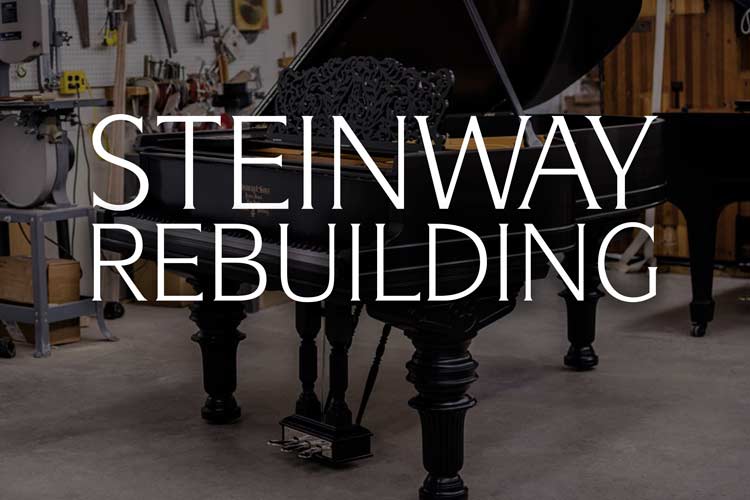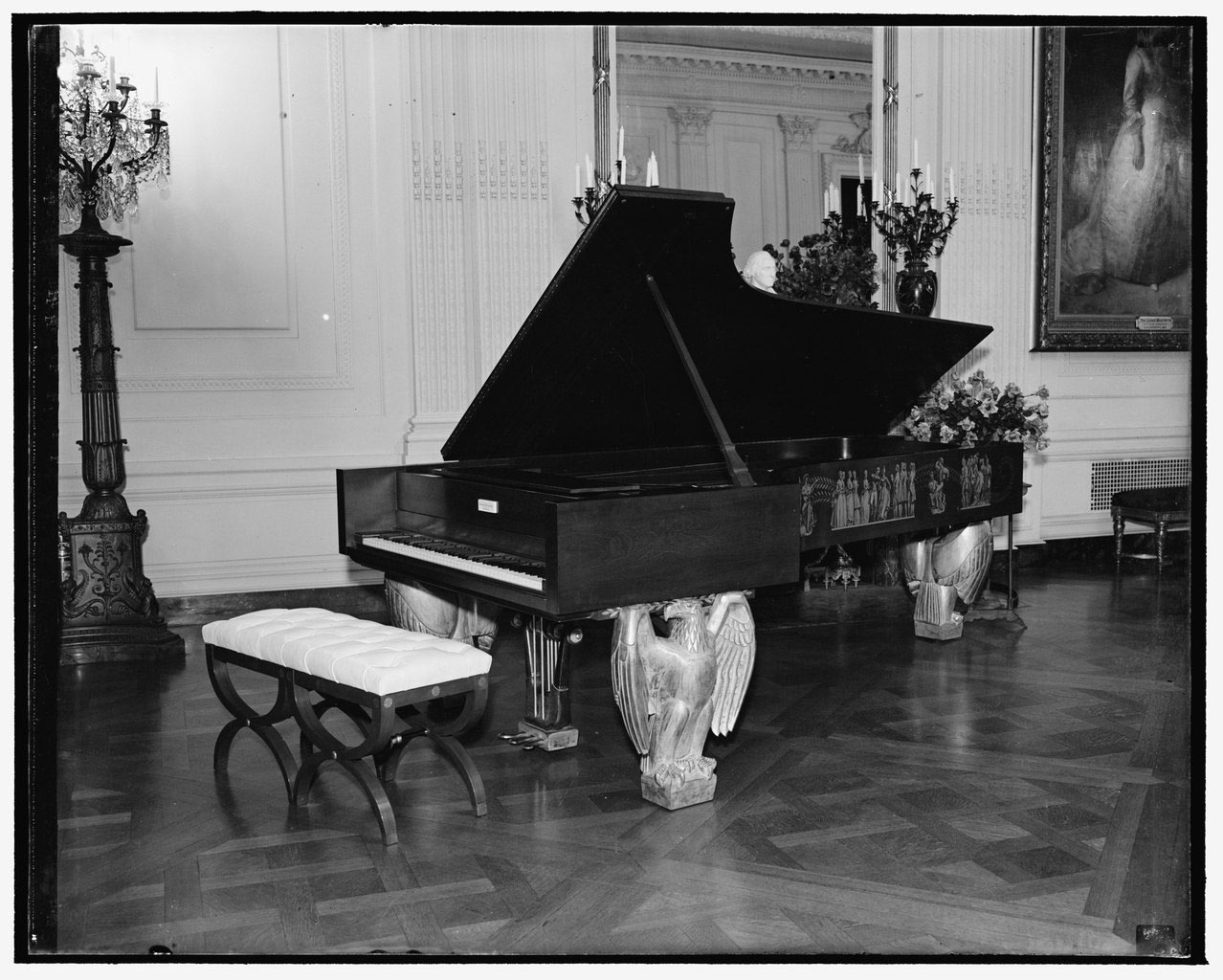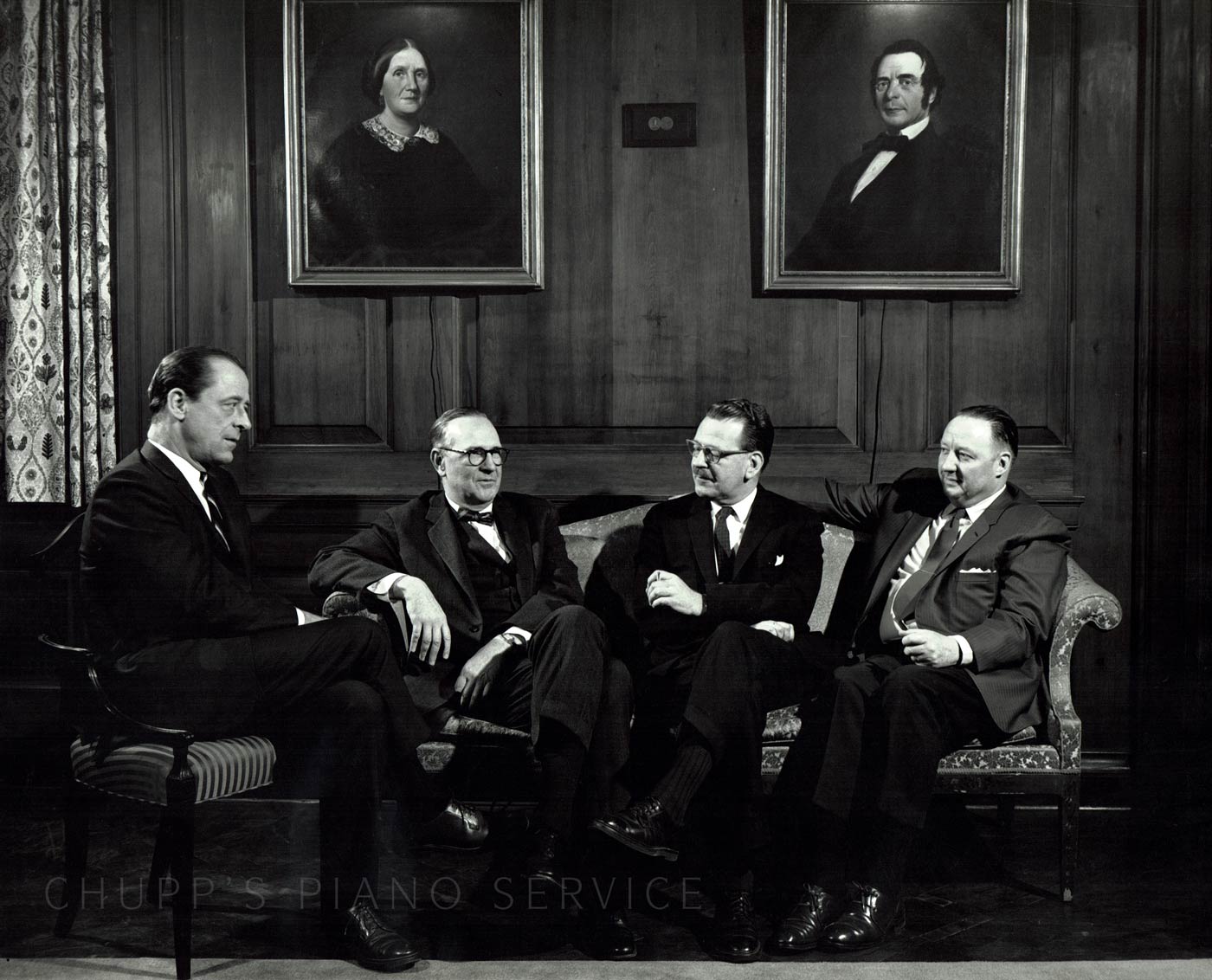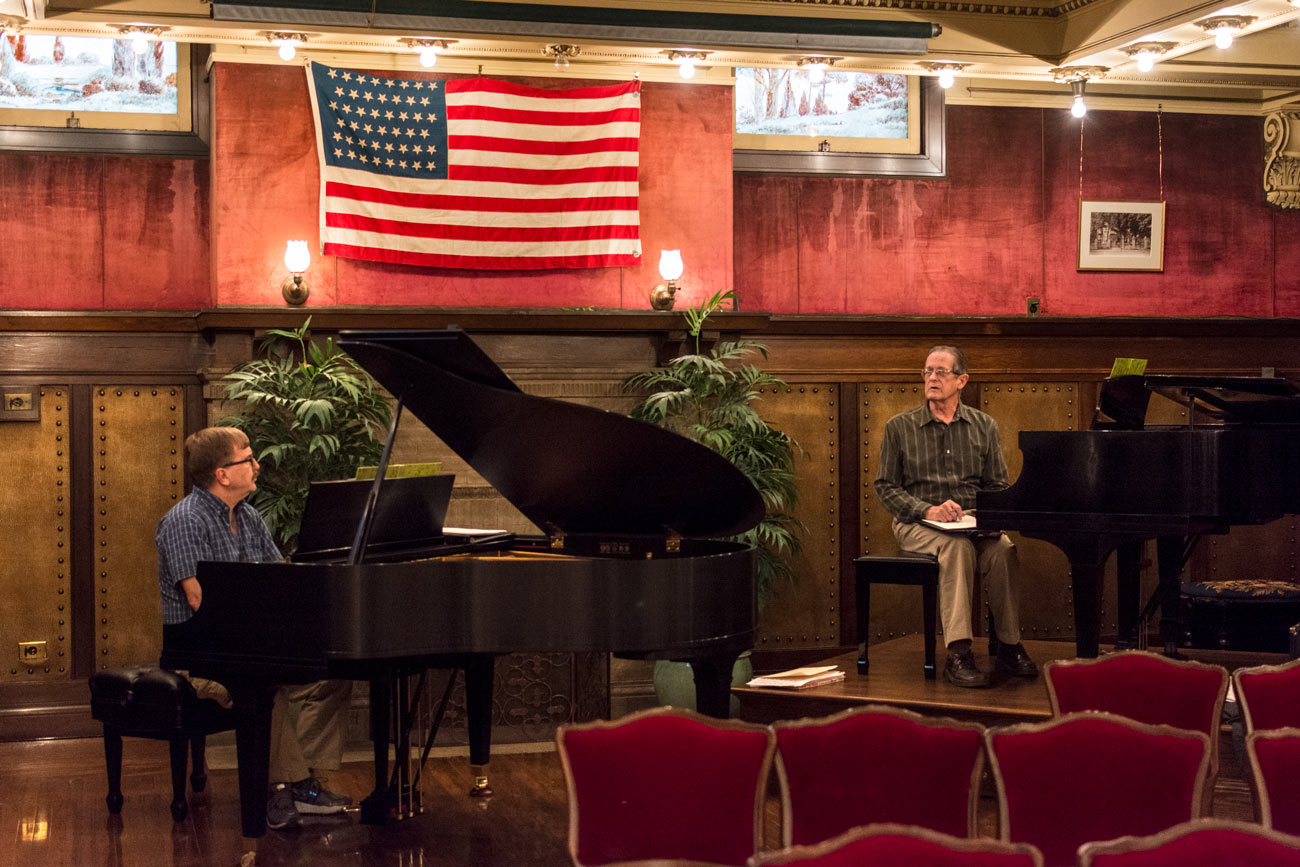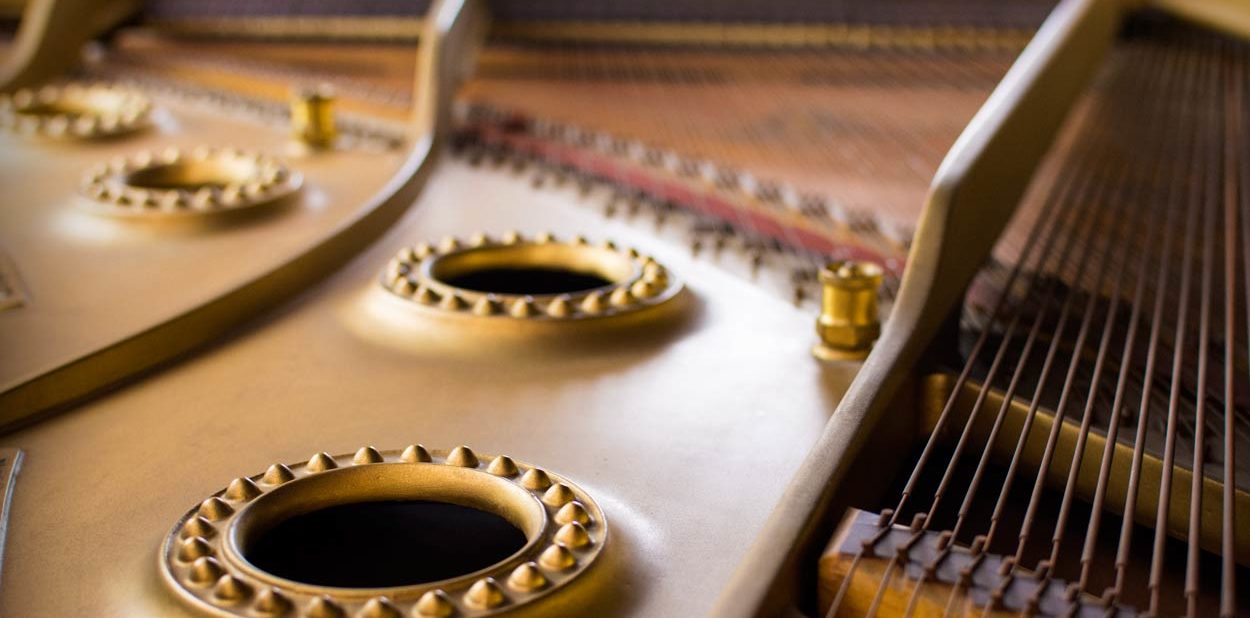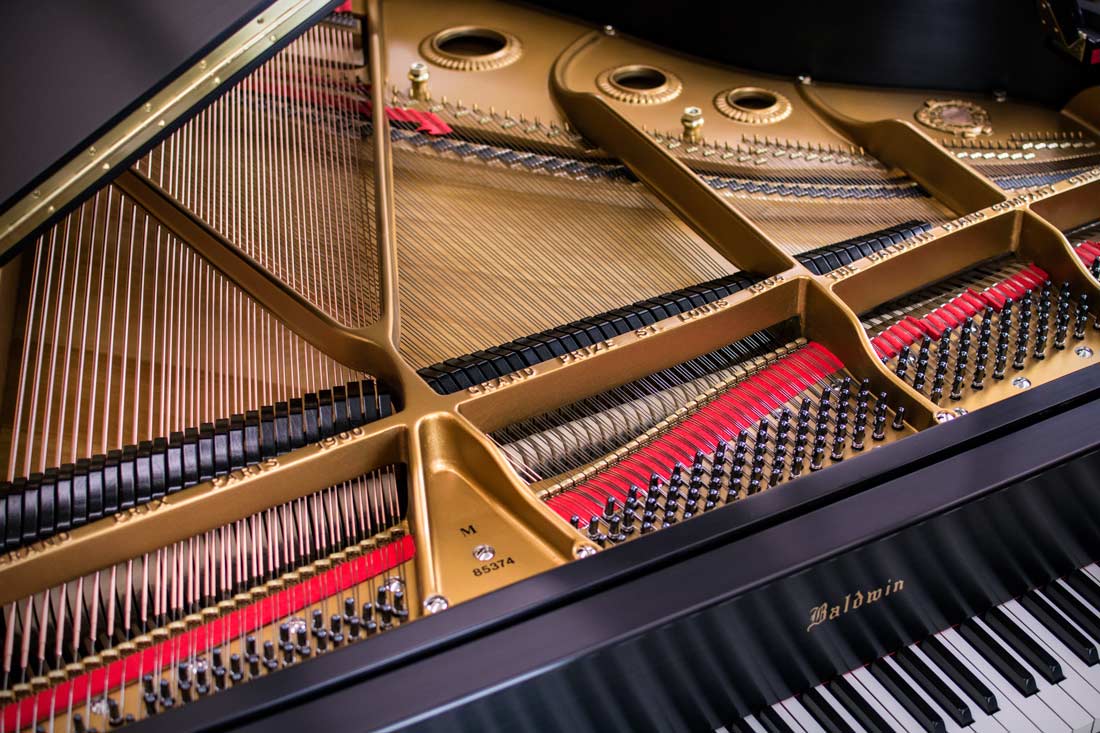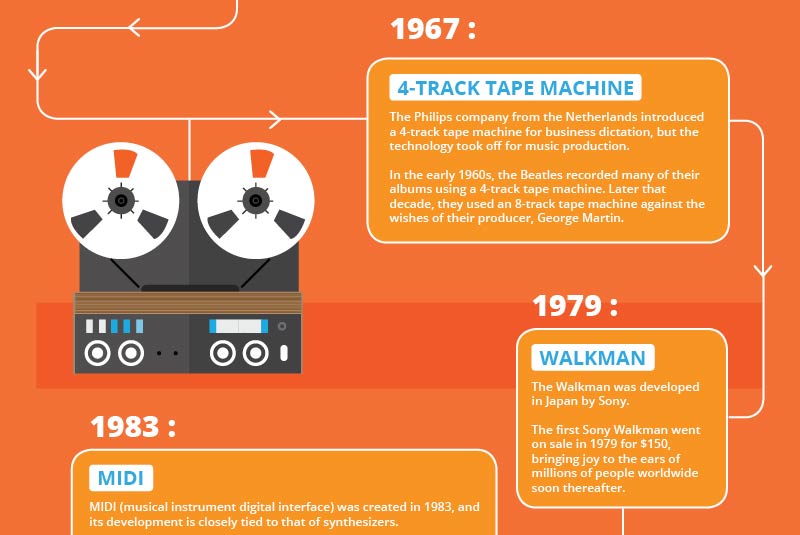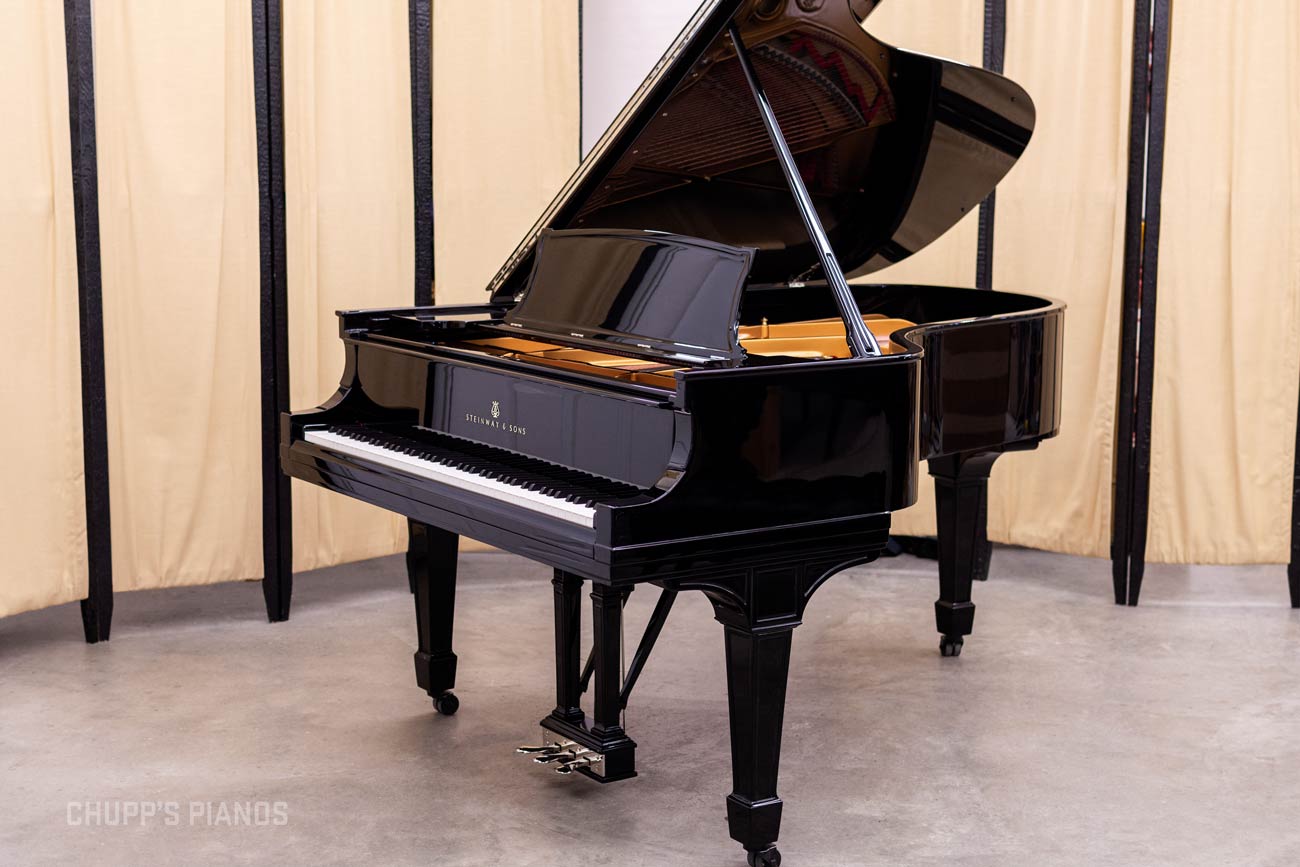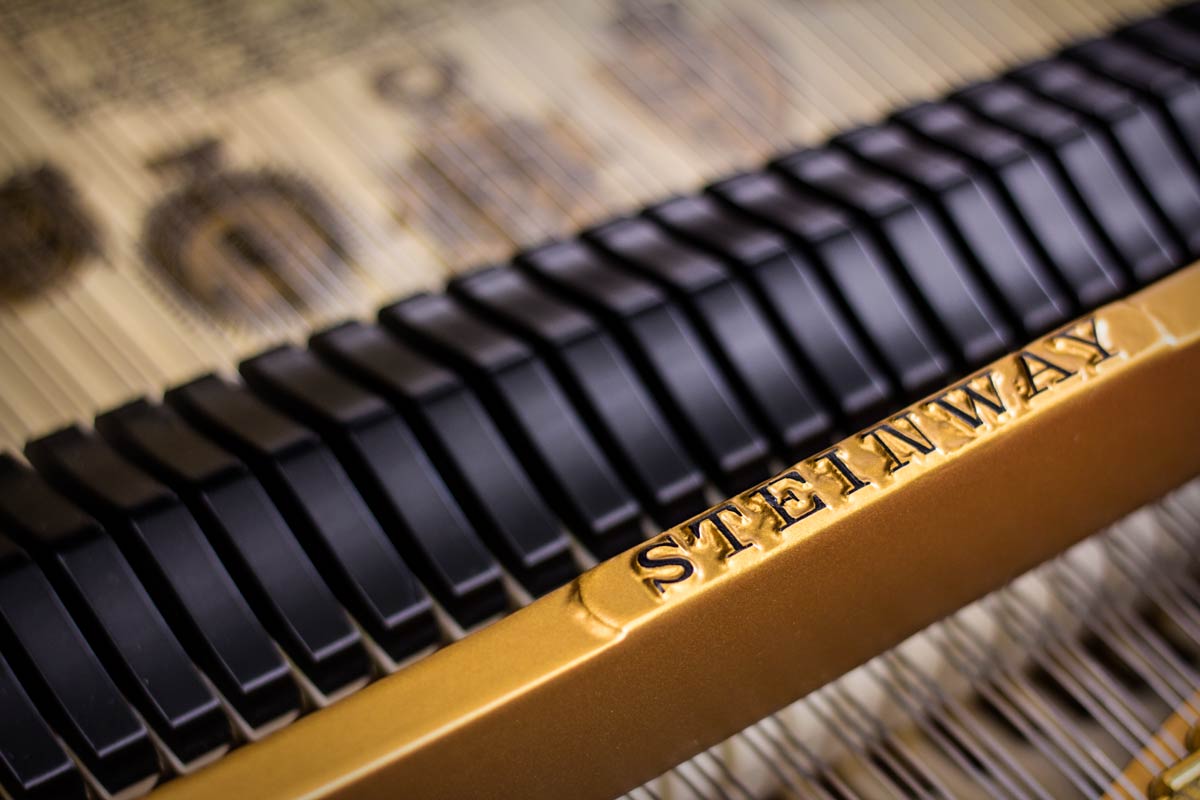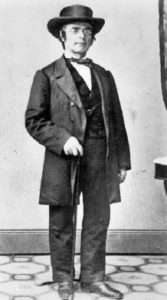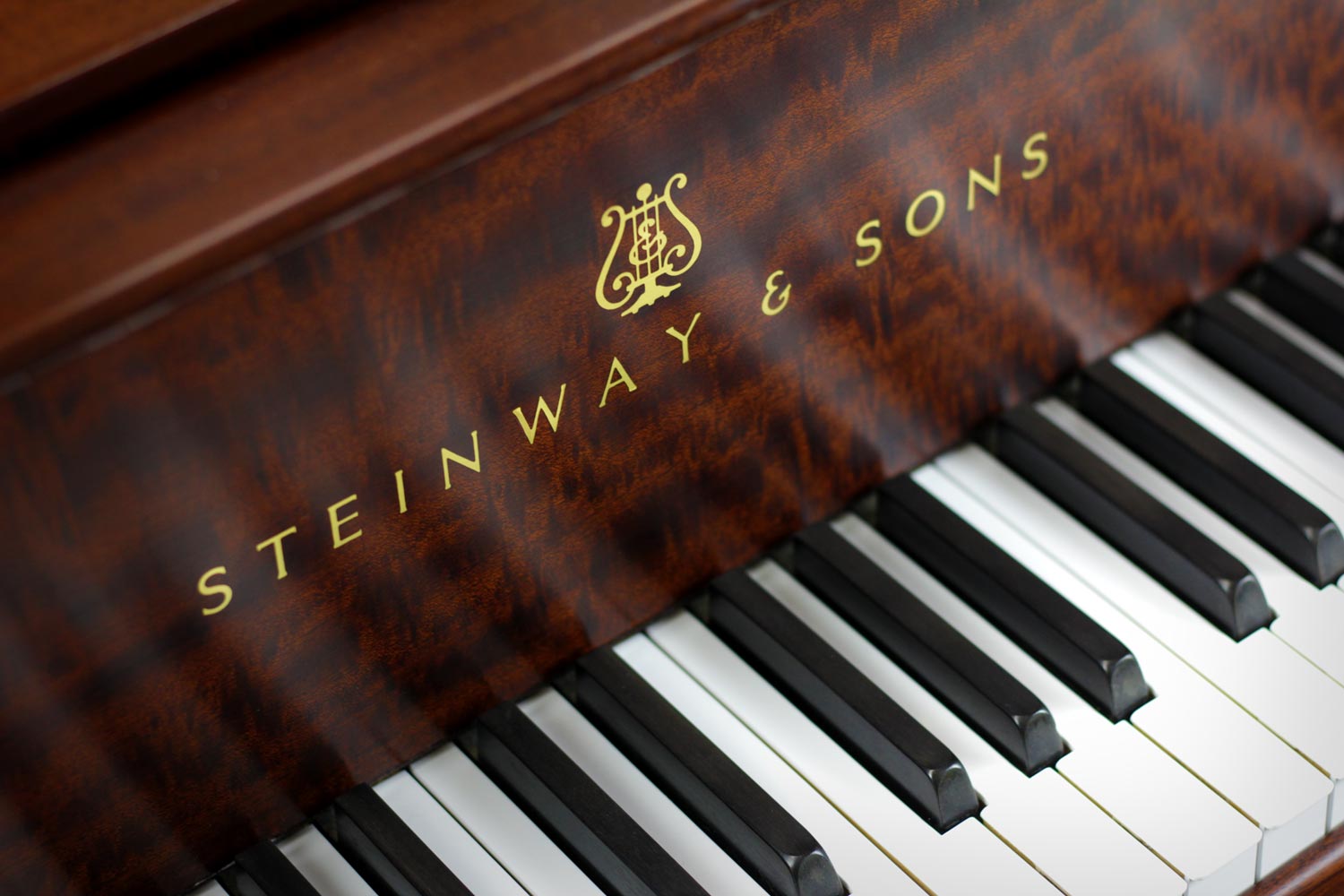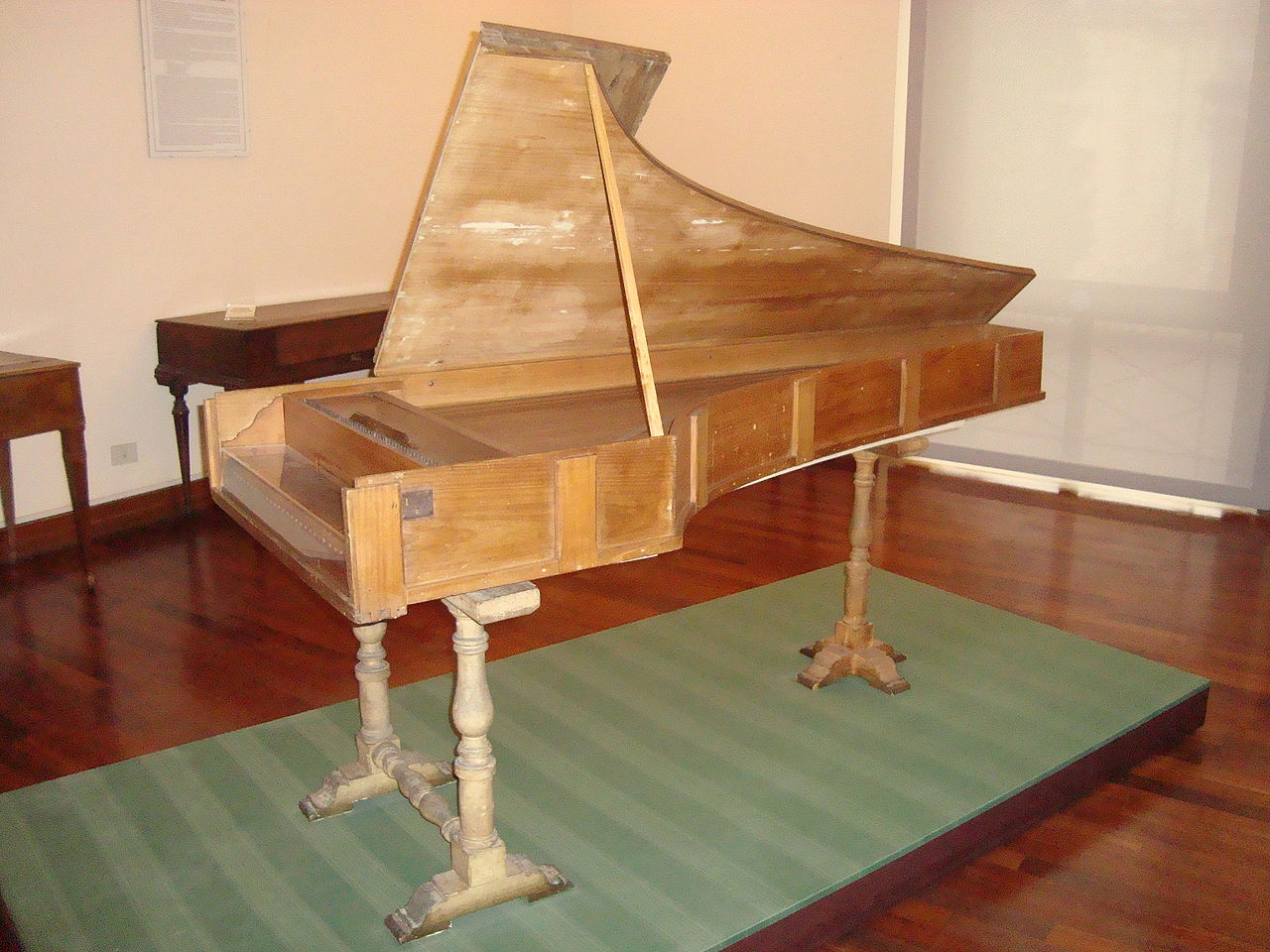A Political Note… Steinway Pianos in the White House
White House Steinways - Since 1903
1600 Pennsylvania Ave in Washington, D.C. The home of the President of the United States... and multiple pianos? Like other countries, music is rooted in American history, so it is no wonder that pianos of various makers have found their way into one of the world's most well known political residences. Since 1903, the showpiece grand piano in the White House has been a Steinway Model D. Read on for more!The Current Piano - Steinway #300000
Steinway & Sons recognized the honor, prestige, and yes, marketing value that came with having their instrument reside in the home of the President of the United States. The most well-known piano in the White House is a 1938 Steinway & Sons Art Case Model D Concert Grand #300000 veneered in mahogany. Resting on legs resembling American Bald Eagles, this piano features motifs depicting traditional American music.New York Steinways vs. Hamburg Steinways – a Tail of Two Factories
Steinway & Sons New York and Hamburg | What's the Difference?
Question: “What's the difference between Steinway pianos built at the company's New York Factory and their Hamburg Factory?"
An American Company
While Charles Dicken's novel A Tale of Two Cities dealt with the cities of Paris and London, this comparison deals with New York and Hamburg. Specifically, their shared role as the home for Steinway & Sons pianos. This unusual situation has resulted in key differences between the American and European variants of these legendary musical instruments.
Contrary to the belief of some, Steinway & Sons is not a European company and have always been an American company first and foremost. Founded by German immigrant Henry E. Steinway, the New York-based company grew quickly from its modest founding in 1853 to quickly become the leading piano maker in North America. This led to increased demand for their products in both the United States and around the world. As this demand for pianos grew, the decision was made to open a factory overseas and the Steinway name returned to Germany - the City of Hamburg, to be exact.
The Baldwin: The Story of a Piano Restoration – Ruthmere Museum & Chupp’s Pianos
Partnering With The Ruthmere to Restore Local History
This historic Baldwin Model M Baby Grand Piano was fully rebuilt by Chupp’s Piano Service. Built in 1938 at the Cincinnati Baldwin piano factory, this grand piano was a family heirloom of the Deputy family, the last residents of the historic Ruthmere Mansion in Elkhart, Indiana. (In fact, one of their family portraits at the museum shows the family sitting around this very piano.) The piano is believed to have been moved out of the mansion in 1969. Recently, the Deputy family generously donated the Baldwin piano to the Ruthmere Museum, returning it to its former home. This is the story of a historic piano’s full restoration. Producer/Shooter/Director: Benjamin Rogers - Music Written & Performed by Philip Balke - Special thanks to The Ruthmere Museum of Elkhart, IN.The History of Mason & Hamlin Pianos | An Ongoing Legacy
From 1854 to Today | Mason & Hamlin
The tale of the Mason & Hamlin’s rise to the top of the piano world is an interesting piece of history, dating back to the mid 19th century. Now normally, the first name to come to mind when thinking of premium pianos is probably the venerable Steinway & Sons company. Steinway has long enjoyed a spot at the top of American piano manufacturers in both artists' use and public opinion. However it would be very remiss to ignore the contributions and the ongoing history of another leading piano maker, Mason & Hamlin. Created one year after the founding of Steinway & Sons in 1854, Mason & Hamlin quickly asserted themselves as a company dedicated to handcrafted quality and today is one of only two fully operational piano manufacturers in the United States today (with the other being their longtime competitor, Steinway).Letter to the Editor: Reader Appreciates Rebuilt Baldwin Piano
An outstanding musical gift to our community was presented at the Ruthmere Museum Friday night April 1. The event welcomed back a totally restored 1938 Baldwin Baby Grand piano, generously funded by the original owners, the Deputy family.
The Evolution of Musical Tools | From 4-Tracks to Music Streaming
Hear The Difference | Through the Years with Music Technology
The way we create and listen to music has changed dramatically over the years. Since the 1960s, advancement in music technology has seemed to escalate at an ever quickening pace. In decades past 4-track tape machines were the norm. Today, tablets and computers allow us to create, listen and interact with music in ever changing ways. Take a look at the handy info-graphic below for more about the fascinating evolution of music technology.The Steinway Model A-1 vs. A-2 vs. A-3
The Steinway Model A Family | What's the Difference?
Question: “I was looking at Steinway Model A pianos and noticed that there are pianos labeled Model A-1, A-2 and A-3 and it is getting a bit confusing. What is the difference between these models of Steinway pianos?
